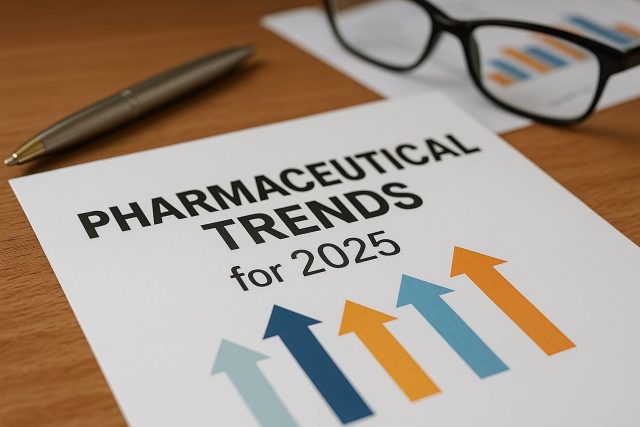Can a flashy website really move the needle for an oncology brand? Is social media too risky for pharma compliance? These questions reflect some of the biggest myths in digital marketing in pharma, an area that continues to evolve at warp speed yet remains tethered by legacy thinking. Many marketers in the pharmaceutical industry struggle to balance innovation with regulation, often falling into traps set by outdated beliefs.
This article aims to debunk widespread misconceptions and provide clear insights that pharma marketers can use to build smarter, compliant, and more effective campaigns in the digital age.
Table of Contents
Digital Equals Non-Compliant: Myth or Truth?
Social Media Has No Place in Pharma Marketing
HCPs Aren’t Engaged by Digital Campaigns
One-Size-Fits-All Content Still Works
Conclusion and FAQs
Digital Equals Non-Compliant: Myth or Truth?
One of the most persistent misconceptions in digital marketing in pharma is that it inherently conflicts with regulatory compliance. Certainly, navigating FDA, EMA, or OPDP guidelines can be daunting. However, that doesn’t mean digital campaigns are incompatible with compliant messaging.
In fact, digital platforms offer more control over messaging than traditional tactics. Marketers can pre-approve visuals, use dynamic content tools with compliance controls, and leverage gated environments to target specific audiences like HCPs or payers. Technologies like Veeva-approved email and compliant video platforms support these initiatives.
Furthermore, digital strategies allow for real-time updates when regulatory feedback occurs, offering flexibility that print and broadcast simply can’t match. Working in partnership with legal and medical affairs from the start ensures smooth execution.
Companies like eHealthcare Solutions provide programmatic tools that align targeting with compliance, reducing risk and increasing precision.
Social Media Has No Place in Pharma Marketing
Another outdated belief is that social media is off-limits due to its open, user-generated nature. While it’s true that pharma faces unique risks, especially around adverse event reporting, this does not mean that platforms like LinkedIn, Twitter, or even Facebook have no value.
Subheading: Controlled Engagement and Monitoring Tools
With the right monitoring software and pre-approved engagement protocols, pharma can participate in meaningful conversations. Branded content on LinkedIn can highlight disease awareness campaigns or share industry thought leadership without mentioning product claims.
Take, for instance, Keytruda’s awareness campaigns around immunotherapy. These often use unbranded social channels to drive patient education while maintaining compliance.
Social listening tools can also help identify patient sentiment, gaps in provider communication, or competitive intelligence. Pharma brands that ignore social media miss not just visibility but critical real-time feedback.
As highlighted in Pharma Marketing Network, when social media is approached strategically, it becomes an asset rather than a liability.
HCPs Aren’t Engaged by Digital Campaigns
The belief that healthcare professionals (HCPs) prefer in-person detailing over digital outreach is rapidly losing ground. While personal connections remain important, HCPs increasingly favor on-demand, digital-first engagements that fit their hectic schedules.
A 2024 Accenture study reported that 68% of U.S. physicians prefer remote or hybrid interactions with pharma reps. Tools like virtual eDetailing, interactive webinars, and AI-driven email automation allow brands to stay relevant without disrupting clinical workflows.
Subheading: Omnichannel Personalization Matters
Successful digital campaigns integrate multiple touchpoints—email, mobile apps, social media, and EHR integrations—to deliver timely and tailored content. This isn’t just about reach; it’s about relevance.
With AI platforms analyzing click-through rates and behavioral data, pharma marketers can fine-tune their messaging for specific specialties. For example, if a cardiologist interacts more with content related to Eliquis, future emails can highlight new data or indications accordingly.
These engagements are trackable and measurable, offering insights that in-person visits cannot.
One-Size-Fits-All Content Still Works
In the early 2000s, it was common to create a single set of marketing assets and distribute them broadly. However, today’s digital environment rewards brands that personalize content based on audience segmentation.
Subheading: Segmentation by Behavior, Not Just Demographics
HCPs and patients alike consume content differently depending on their needs and online behavior. An oncologist looking for peer-reviewed trials has different expectations than a primary care physician needing quick dosing guides. Similarly, a caregiver seeking support for a loved one with Alzheimer’s may engage better with video explainers than dense PDFs.
Dynamic content delivery platforms can adjust what each viewer sees based on their engagement history. This not only improves the user experience but also boosts performance metrics like time on page, conversion rates, and return visits.
Brands that still rely on static websites or generalized email blasts risk becoming irrelevant. As seen on Pharma Marketing Network, companies that embrace micro-segmentation strategies often report higher ROI and stronger brand affinity.
Conclusion
Many pharma marketers still view digital as secondary or risky. However, as the industry continues to transform, understanding the truths behind common misconceptions in digital marketing in pharma is essential.
Compliance and innovation are not mutually exclusive. Social media offers powerful visibility. HCPs appreciate convenience. And personalized content consistently outperforms generic campaigns.
By letting go of these outdated notions, pharma marketers can unlock the full potential of digital engagement—driving better health outcomes and deeper connections with their target audiences.
FAQs
Is digital marketing in pharma compliant with FDA regulations?
Yes, with the right strategy and cross-functional collaboration, digital campaigns can fully align with FDA and other regulatory requirements.
Can pharma use social media safely?
Absolutely. With monitoring tools and pre-approved guidelines, pharma can engage in social media while minimizing risk.
Do healthcare providers prefer digital over in-person engagement?
Many do. Hybrid and remote interactions are increasingly favored due to flexibility and convenience.
Is personalized digital content really more effective?
Yes. Segmented, behavior-driven content consistently delivers higher engagement and ROI.
Are there proven platforms for compliant digital advertising?
Yes. Vendors like eHealthcare Solutions specialize in compliant targeting and measurement solutions for pharma brands.
This content is not medical advice. For any health issues, always consult a healthcare professional. In an emergency, call 911 or your local emergency services.
